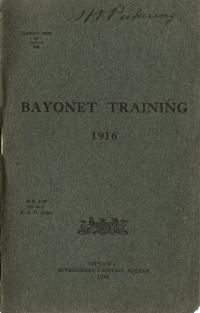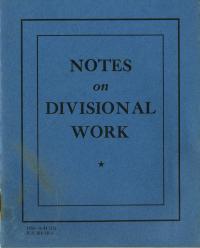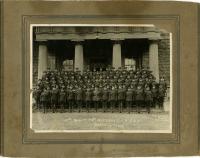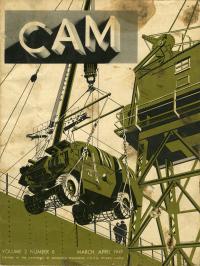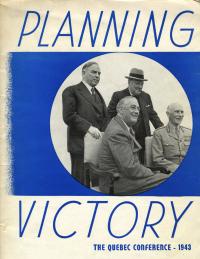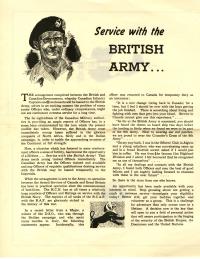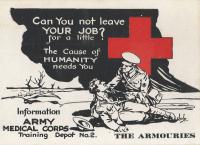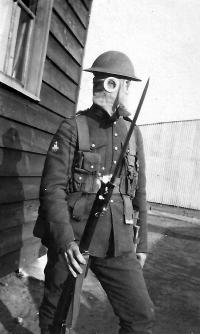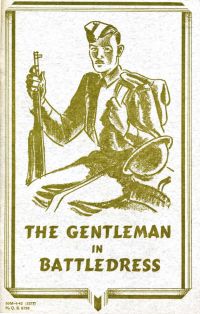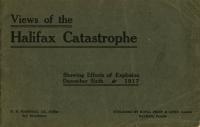Fighting
Killing at close quarters
This training manual stressed that effective bayonet fighting required "Good Direction, Strength and Quickness, during a state of wild excitement and probably physical exhaustion."
How to have a happy and efficient ship
Managing seamen, who were typically divided into four Divisions (Forecastle, Foretop, Maintop, and Quarterdeck), relied heavily on an officer's unselfishness, humour, and common sense - the main principles underlying this training manual.
From Montreal to the Western Front
The formal group portrait was a ritual of service during the First World War. This draft of artillerymen, destined to reinforce units at the front, includes a number of men who appear far too young, and perhaps under the height restrictions, for military service.
"In the interests of Mechanical Maintenance"
CAM was a kind of bible for Canadian military mechanics during the Second World War - but it's equally notable for its fine graphic art covers.
The Quebec Conference
In August 1943, Canada played host to US president Franklin D. Roosevelt, British prime minister Winston Churchill, and a host of important commanders and civil servants from the Allied nations to plan the next phase of the war against Germany and Japan.
Canloan officers
Heavy losses among British infantry officers necessitated the creation of a program to loan trained Canadian officers, of which there was an ample supply, to British units in the field.
The Canadian Army Medical Corps wants men!
This recruiting card was typical in promising to get the volunteer to the front quickly, but unusual in offering valuable training for a postwar career.
"Gas! Gas! Quick, boys!"
For soldiers in training during the First World War, the gas mask was not so much a vital piece of battlefield equipment as an unusual accessory to be modeled in amusing photographs.
The Gentleman in Battledress
This speech by Lt.Col. James Mess tried to recruit young men to the Canadian Army.
Views of the Halifax Catastrophe
After the city of Halifax was devastated by an explosion in 1917, all of the sights that had characterized the war in Europe - ruined buildings, wreckage-strewn cityscapes, rows of unidentified bodies - were seen in Canada.

